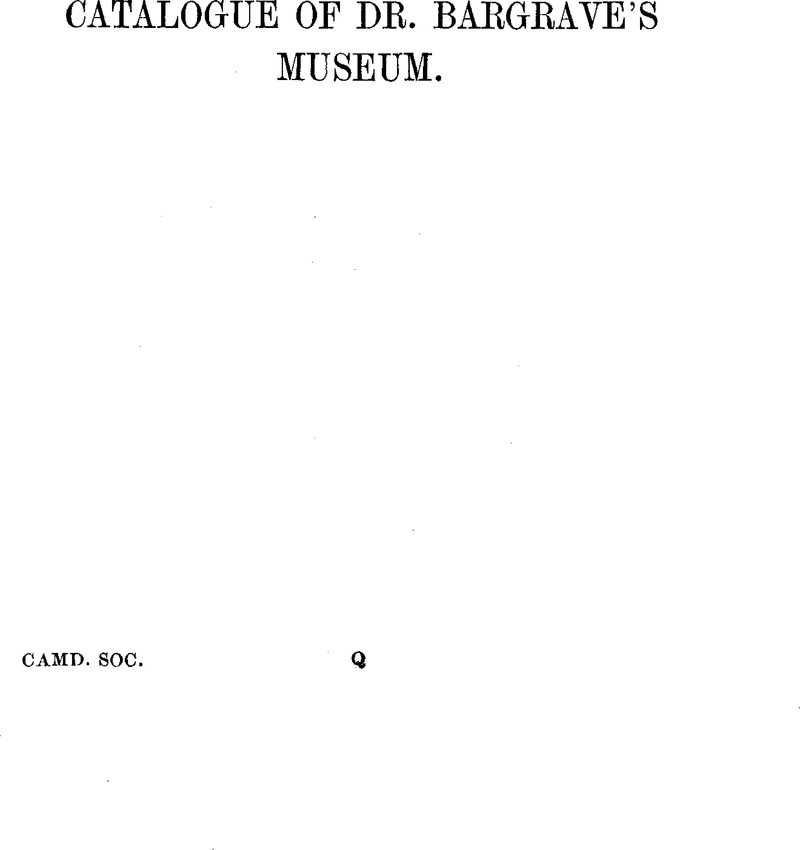No CrossRef data available.
Article contents
Rara, Antiqua, et Numismata Bargraviana
Published online by Cambridge University Press: 23 February 2010
Abstract

- Type
- Catalogue of Dr. Bargrave's Museum
- Information
- Copyright
- Copyright © Royal Historical Society 1867
References
page 114 note * The words in Italics were a later addition.
page 115 note * Sic.
page 116 note * This agrees with Raymond's description, p. 105.
page 117 note * Sic. It is now called the Cireus of Maxentius, or of his son Romulus.
page 118 note † The word is properly not guglio, but guglia.
page 119 note * This is now erected in front of the church of Sta. Trinita de’ Monti.
page 119 note † This now stands on the Monte Citorio.
page 123 note * See the Introduction to this volume. Raymond says, “This mountain was the ultima meta of our voyage to Naples.” (P. 163.)
page 123 note † The same article is described on a separate paper as “a cristall as it naturally groweth, sexangular, which I met with on the Penine Alps, on the Sempronian Mount, now called Mount Samplon.” Sir Henry Wotton, among his bequests, mentions “a piece of crystall, sexangular (as they grow all), grasping divers things within it, which I bought among the Rhaetian Alps, in the very place where it grew.” (Walton's Lives, 109, ed. Oxf. 1824.) For the passage of the Simplon, as it was in those days, see Raymond, p. 248.
page 125 note * Some directions for the use of the stone are here omitted.
page 127 note * This was, of course, a fossil shell.
page 127 note † The name of this place ought to be written Doué.
page 127 note ‡ Jean Desmarets, for whom see Bayle, x, 236, seqq. ed. Paris, 1820; or Nouv. Biographie Gfcnerale.
page 128 note * This word seems superfluous.
page 132 note * Cornelius Jansen “in 1636 and the next following years resided with Sir Arnold Braems, a Flemish merchant at Bridge [Place], near.Canterbury.” (Dallaway's note in Walpole's Anecdotes of Painting in England, ii. 10, Lond. 1828.) His portrait of Dean Bargrave is in the Deanery at Canterbury, and was lent for the National Portrait Exhibition of 1866.
page 133 note * i. e. the central tower of Canterbury Cathedral.
page 134 note * i. e. auger.
page 135 note * It is the ordinary Chinese paper.
page 138 note * On the back of the drawing (which is on parchment), is the following inscription :
“Shaban AGA il Grand d’ ALGEEBS.
The King of Argeers, to whom I delivered his Maties letters credential, when in 1662 I went his Maties commissioner for the redemption of the English captives there with hierarchical and cathedral money, with which I redeemed and brought home with me all, viz. 162 slaves.
JOHN BAKGRAVE, Gent., of Kent.
Canon of Christ Church, Canterbury.
An Italian slave, a painter, drew me this rude piece at Argeers, very like as to face and habit. The copies of which in large I gave, one to his MaUe Charles the Second, who hanged it in his private closet; another I gave to my patron, Archbishop Juxon; a third to Archbishop Sheldon; and a fourth I kept for myself, in memorandum of that Christian and noble imploy, 1662.”
page 139 note * Nos. 65 and QQ are now bound together. See the Introduction.
page 140 note * See the Introduction, p. xxviii.




